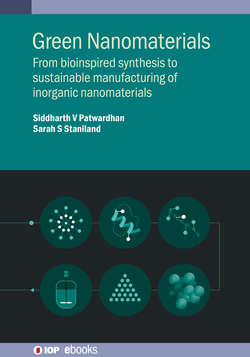Читать книгу Green Nanomaterials - Siddharth Patwardhan - Страница 29
На сайте Литреса книга снята с продажи.
2.4.2 Nanodevice technologies 2.4.2.1 Lab-on-a-chip diagnostics
ОглавлениеThere is much overlap between the last section on nanosensors, and this section on nanodevices. Indeed, much of the research in the area of nanodevices is centred around medical sensing and the future goal of completely personalised and rapid multiple diagnostics healthcare built into one small chip, which can then be easily processed in an simple hand-held electronic reader (figure 2.11(A)). Here a drop of blood could be distributed via microfluidics to multiple nanosensors to detect a complete set of diseases and wellbeing factors with unparalleled sensitivity and speed. This idea of bringing multiple nanosensors and microfluidics together on one surface ‘chip’ has been termed lab-on-a-chip and has coalesced into a dedicated research field driven by this goal, with many excellent reviews on the subject [37, 40].
Figure 2.11. (A) Diagram of a point-of-care test chip and reader to offer immediate diagnostics (reproduced from [37], copyright 2015 with permission from Elsevier). (B(i)) Image of a hard disc drive (HDD), (ii) diagram describing how a magnetic patter can be read as binary code for (a) transverse magnetic recording and (b) perpendicular magnetic recording (reproduced with permission from Scott Bird). (iii) Schematic of conventional granular magnetic recording media (left) compared to high-density patterned media (right) (reproduced with permission from [38], copyright 2008 IEEE). (C(i)) Schematic to show the central premise of spintronics. The electronic spin can be manipulated with a magnetic field. (ii) A 2D spin field-effect switch of MoS2 on graphene (reproduced with permission from Macmillan Publishers Ltd [39], copyright 2016).
